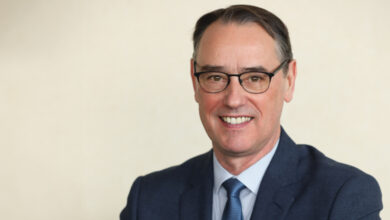Integration in action

David Whelan talked to Barry Corr, Principal of Seaview Primary School in Glenarm, a school on the verge of becoming the first faith school to transform to integrated status in Northern Ireland, about the journey to integration.
School integration in Northern Ireland is far from a new concept. Department of Education figures show that there are currently 62 grant-aided integrated schools in Northern Ireland with a total enrolment of 21,956 pupils, around 7 per cent of the pupil total and in 2019 alone, seven schools have voted to transform to integrated status.
Integration and the desire for integrated education in Northern Ireland is also a long-standing legacy. The 1923 Education Act Northern Ireland set out a vision for all children to attend the same non-denominational schools, with no religious instruction during school hours. The bill was met with great resistance from both the Catholic and Protestant churches and was essentially amended to revert the system back to segregation as had been the case.
Against the influence of the churches on education, a major milestone for the current vision of integrated education was the formation of the All Children Together parents’ group in 1973, who went on to open Lagan College in 1981, after no existing schools had taken up an available route to integration.
Fast-forward to today and despite government support for greater levels of integrated education, a seeming lack of political will to enforce change has meant that the school system in Northern Ireland still largely reflects traditional divisions in society. A recent independent review of Integrated Education in Northern Ireland published in 2017 highlighted that the majority of children and young people continue to be educated within single or majority identity settings with 70 per cent of controlled school pupils being Protestant and 96 per cent of maintained schools being Catholic.
The 2006 Bain Review prompted an introduction of the Department’s Sustainable School Policy, noticing that declining demographic numbers meant that there were now too many schools in Northern Ireland and some had become educationally unsustainable.
Seaview PS
Sustainability was a key factor in the move of Seaview Primary School to start its integration journey. The maintained school in Antrim’s first glen serves the local village of Glenarm and the surrounding rural area but last year enrolment figures were just 42 pupils of its 121 capacity.
Principal of the school for seven years now, Barry Corr, explains that rumours that the school would be earmarked for closure in and around 2012 led to a fall in pupil numbers from around 60 to just 35. This was despite the closure of a nearby controlled school. While the school has been working to rebuild its numbers since then, Corr highlights an ongoing concern that as a Catholic Maintained School, Seaview were not catering for all of the people in the village and surrounding area.
“We estimated that around 40 people from the village and surrounding area were leaving everyday to access other schools. There was a section of our community not being catered for following the closure of the controlled school and given that we are a very good school, as verified by the inspectors, we believed we had more to offer the surrounding community.”
In 2016 a community conversation organised by Ulster University brought parents together to discuss the future direction of education in the area. While different proposals were discussed, including a potential new site in Glenarm for integrated education, Corr says that the conversation helped highlight the benefits that could come from transforming the existing Seaview site.
Recently the Council for Catholic Maintained Schools (CCMS) announced its decision to close the school in August 2020 and all factors combined meant that in June 2019, 40 out of 42 parents who responded voted in favour of the integrated option. As a result, CCMS has agreed to delay the closure in 2021, enabling more time for the school’s development proposal to go before the Education Authority.
We estimated that around 40 people from the village and surrounding area were leaving everyday to access other schools. There was a section of our community not being catered for… we believed we had more to offer the surrounding community.
Corr says that much like the first integrated school in Northern Ireland back in 1981, the parents and their desire to see a more open form of education alongside a school located in the village, were the driving force behind the shift.
The intended switch has already had an impact with enrolment numbers for the current year jumping by over 50 per cent to 67 pupils. Corr recognises the challenge that comes with the switch: “We know that the change cannot just happen overnight and so while we are still a maintained school, we have taken initial steps to help us along our journey of becoming integrated.”
The Principal outlines some routine changes such as a look to all festivals throughout the year rather than just those Catholic ones and the introduction of various representatives of the Christian churches to assemblies to help develop greater awareness of other religions and cultures.
“If you look at the difference in our school day even now compared to last year, where previously we would have had a Catholic prayer in the morning and afternoon, we have moved to getting the pupils to develop a shared prayer for all. The prayer will be to God because we retain our Christian identity and that will always be at the core of the school but what it does is empower pupils to be involved and understand the difference. It’s a way of us saying ‘this is your school and these are your prayers’.
However, Corr is aware of the school’s necessity to go beyond routine challenges alone. “To become an integrated school from our current status, something has to change,” he explains. “That’s something we are all very aware of and we’ve been working with staff to begin that transition. So, we have been taken up a lot of training offered by The Council for Integrated Education Northern Ireland (NICIE) and planning ethos awareness meetings and guidance on how we work best with the local community and with the pupils.
“In essence, we are becoming a more open school and so there’s a challenge in that we are going to be laying everything out on the table and looking at how we best address them and manage them. We need to ensure we are appropriately managing all celebrations of culture.”
Corr is grateful of the support he has received in supporting the school on their journey, including from other principals involved in education. Constant learning and preparation, he says, will equip Seaview well for when the planned transformation takes full effect.
Looking to the future he states that changes to date have been positively received by parents and the local community and he hopes to see a further increase in enrolment numbers for next year and onwards.





